Junli Li
Department of Engineering Physics, Tsinghua University, Beijing, China
Efficient Monaural Speech Enhancement using Spectrum Attention Fusion
Aug 04, 2023Abstract:Speech enhancement is a demanding task in automated speech processing pipelines, focusing on separating clean speech from noisy channels. Transformer based models have recently bested RNN and CNN models in speech enhancement, however at the same time they are much more computationally expensive and require much more high quality training data, which is always hard to come by. In this paper, we present an improvement for speech enhancement models that maintains the expressiveness of self-attention while significantly reducing model complexity, which we have termed Spectrum Attention Fusion. We carefully construct a convolutional module to replace several self-attention layers in a speech Transformer, allowing the model to more efficiently fuse spectral features. Our proposed model is able to achieve comparable or better results against SOTA models but with significantly smaller parameters (0.58M) on the Voice Bank + DEMAND dataset.
SPP-CNN: An Efficient Framework for Network Robustness Prediction
May 13, 2023



Abstract:This paper addresses the robustness of a network to sustain its connectivity and controllability against malicious attacks. This kind of network robustness is typically measured by the time-consuming attack simulation, which returns a sequence of values that record the remaining connectivity and controllability after a sequence of node- or edge-removal attacks. For improvement, this paper develops an efficient framework for network robustness prediction, the spatial pyramid pooling convolutional neural network (SPP-CNN). The new framework installs a spatial pyramid pooling layer between the convolutional and fully-connected layers, overcoming the common mismatch issue in the CNN-based prediction approaches and extending its generalizability. Extensive experiments are carried out by comparing SPP-CNN with three state-of-the-art robustness predictors, namely a CNN-based and two graph neural networks-based frameworks. Synthetic and real-world networks, both directed and undirected, are investigated. Experimental results demonstrate that the proposed SPP-CNN achieves better prediction performances and better generalizability to unknown datasets, with significantly lower time-consumption, than its counterparts.
CNN-based Prediction of Network Robustness With Missing Edges
Aug 25, 2022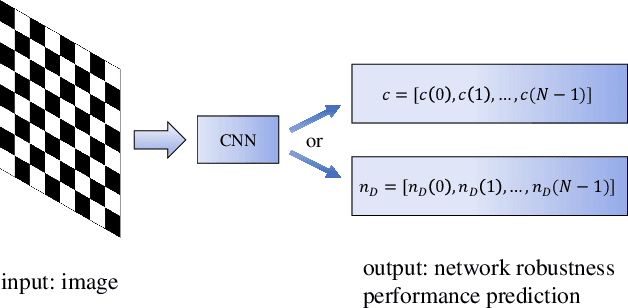

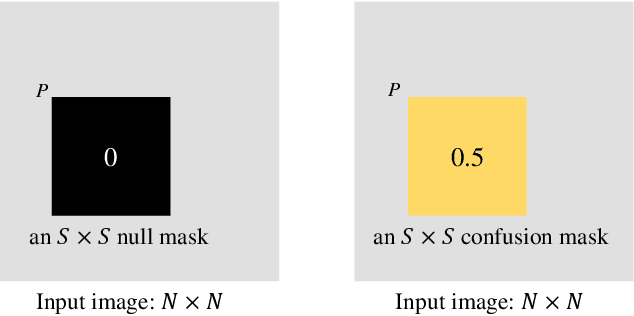
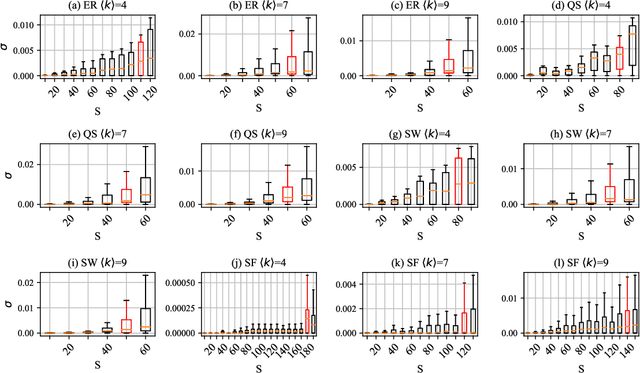
Abstract:Connectivity and controllability of a complex network are two important issues that guarantee a networked system to function. Robustness of connectivity and controllability guarantees the system to function properly and stably under various malicious attacks. Evaluating network robustness using attack simulations is time consuming, while the convolutional neural network (CNN)-based prediction approach provides a cost-efficient method to approximate the network robustness. In this paper, we investigate the performance of CNN-based approaches for connectivity and controllability robustness prediction, when partial network information is missing, namely the adjacency matrix is incomplete. Extensive experimental studies are carried out. A threshold is explored that if a total amount of more than 7.29\% information is lost, the performance of CNN-based prediction will be significantly degenerated for all cases in the experiments. Two scenarios of missing edge representations are compared, 1) a missing edge is marked `no edge' in the input for prediction, and 2) a missing edge is denoted using a special marker of `unknown'. Experimental results reveal that the first representation is misleading to the CNN-based predictors.
A Learning Convolutional Neural Network Approach for Network Robustness Prediction
Mar 20, 2022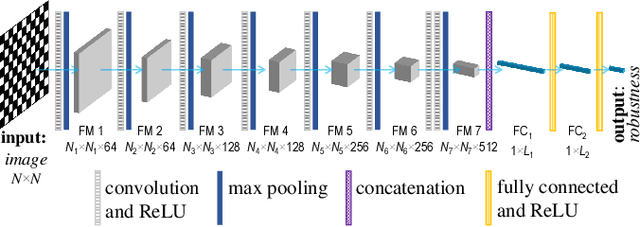
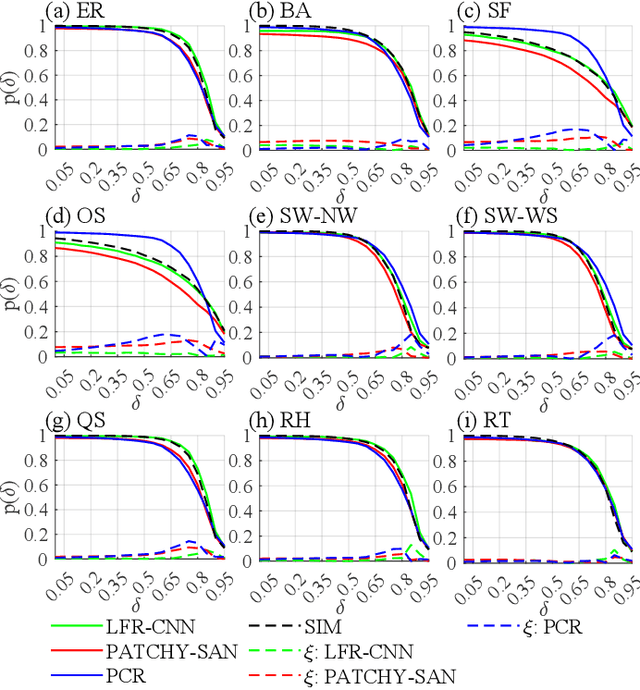
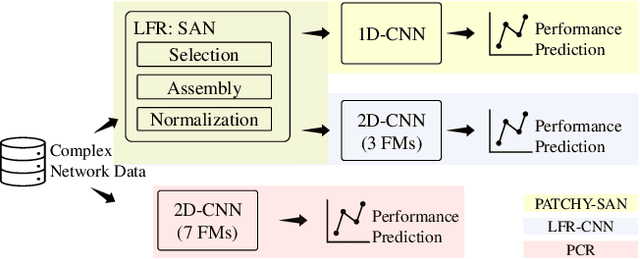
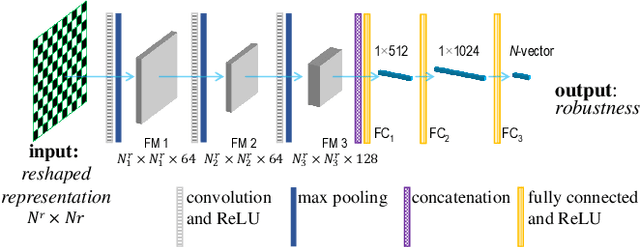
Abstract:Network robustness is critical for various societal and industrial networks again malicious attacks. In particular, connectivity robustness and controllability robustness reflect how well a networked system can maintain its connectedness and controllability against destructive attacks, which can be quantified by a sequence of values that record the remaining connectivity and controllability of the network after a sequence of node- or edge-removal attacks. Traditionally, robustness is determined by attack simulations, which are computationally very time-consuming or even practically infeasible. In this paper, an improved method for network robustness prediction is developed based on learning feature representation using convolutional neural network (LFR-CNN). In this scheme, higher-dimensional network data are compressed to lower-dimensional representations, and then passed to a CNN to perform robustness prediction. Extensive experimental studies on both synthetic and real-world networks, both directed and undirected, demonstrate that 1) the proposed LFR-CNN performs better than other two state-of-the-art prediction methods, with significantly lower prediction errors; 2) LFR-CNN is insensitive to the variation of the network size, which significantly extends its applicability; 3) although LFR-CNN needs more time to perform feature learning, it can achieve accurate prediction faster than attack simulations; 4) LFR-CNN not only can accurately predict network robustness, but also provides a good indicator for connectivity robustness, better than the classical spectral measures.
A marine radioisotope gamma-ray spectrum analysis method based on Monte Carlo simulation and MLP neural network
Oct 24, 2020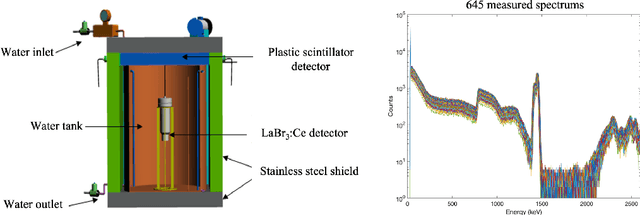

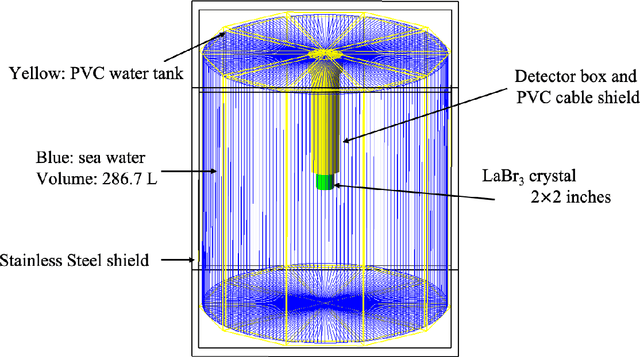

Abstract:A multilayer perceptron (MLP) neural network is built to analyze the Cs-137 concentration in seawater via gamma-ray spectrums measured by a LaBr3 detector. The MLP is trained and tested by a large data set generated by combining measured and Monte Carlo simulated spectrums under the assumption that all the measured spectrums have 0 Cs-137 concentration. And the performance of MLP is evaluated and compared with the traditional net-peak area method. The results show an improvement of 7% in accuracy and 0.036 in the ROC-curve area compared to those of the net peak area method. And the influence of the assumption of Cs-137 concentration in the training data set on the classifying performance of MLP is evaluated.
 Add to Chrome
Add to Chrome Add to Firefox
Add to Firefox Add to Edge
Add to Edge